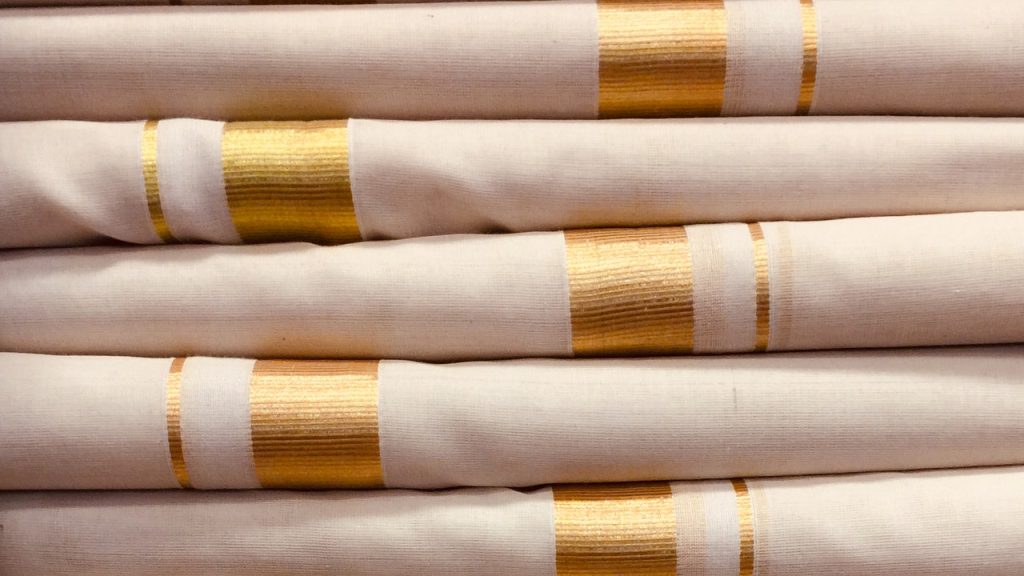Kerala’s traditional kasavu saris stand out for their elegance and visual restraint in a country that boasts of rich colours, decadent embroideries and surface embellishments. But beneath its simple appearance lies a cultural legacy and unique aesthetic. Worn by the Malayali community to temples, weddings and funerals alike, today, this age-old woven craft is in need of a design intervention. Vogue spoke to Sreejith Jeevan, founder and designer of clothing label ROUKA, to understand the intricacies of the kasavu weaves.
The origins of kasavu
The term kasavu actually refers to the zari used in the border of the Kerala sari and not the sari itself. It is the name of a material used in the manufacturing process. Thus, when kasavu becomes a part of the mundu (dhoti), it’s called a kasavu mundu.
In Kerala, traditional attire like saris, mundus (which are sarongs worn by men) and settu mundus (a two-piece sarong sari) are generally called…
